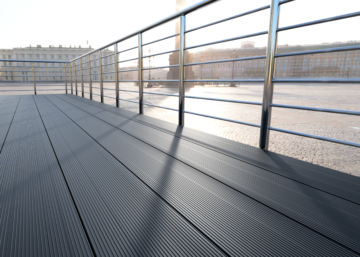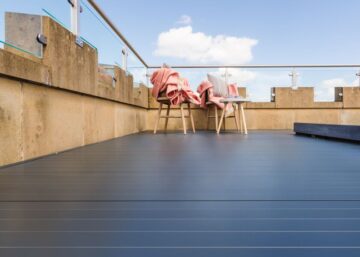As of November 2018, it became a legal requirement for any building materials incorporated into the envelope of a high rise building, exceeding 18 meters in height, to be non-combustible.
Given they form part of the building façade, balconies made with combustible materials were deemed a potential source of fire spread on the external wall of such residential buildings. It has been advised that the removal and replacement of any combustible material used on the building envelope, including balcony constructions, is the clearest way to prevent external fire spread, and this should be conducted by all building owners as soon as practical.
Why Is Aluminium Suitable In Balcony Construction?
Aluminium is classed as a fire-resistant material and will not contribute to the perpetuation of a fire. Not only is it non-combustible, aluminium is also highly resistant to forms of corrosion. The metals natural coating of aluminium oxide provides a highly effective barrier to the ravages of air, temperature, moisture and chemical attack. Both Adek Comfort Grip and Enhanced Grip are made of aluminium that has been coated with a decorative, polyester powder coating system. The combustibility classification of the profiles is determined as A2fl-s1 under BS EN 13501-1.
An Overview of BS EN 13501-1
BS EN 13501-1 provides the fire classification procedure for all construction products, which includes products incorporated within building elements. These products are separated into three categories:
- Construction products (which excludes floorings and linear pipe thermal insulation products)
- Floorings
- Linear pipe thermal insulation products
To classify in accordance with BS EN 13501-1, dependent on the product and area of application, a combination of tests is required which determine a products classification. As all Adek systems are designed as decking/flooring products it was deemed practical to test in accordance with the three following tests:
- BS EN ISO 1716 – Heat of Combustion Test (Calorific Value): this determines the potential maximum total heat release of a product when completely burning, regardless of its end use.
- BS EN ISO 9239-1 – Radiant Panel Test (Floorings Only): this is designed to simulate the conditions experienced by a flooring.
- BS EN ISO 11925-2 – Single-Flame Source Test : this evaluates the ignitability of a product under exposure to a small flame.
How Is A Product Classified?
The classification is split up into three parts: the main classification, the smoke classification, and the flaming droplet classification.
The main part of the classification is its letter – A1, A2, B, C, D, E and F. A1 (non-combustible) is the highest level of performance, with F being the lowest performance level.
Flooring materials are classified according to the same classes (A1, A2, B, C, D, E and F) followed by the abbreviation ‘fl’ for flooring.
Products that are classified in the A1 and A2 classes are non-combustible materials and from B to F are combustible materials in ascending order.
Adeks Comfort & Enhanced Grip Range
Both our Comfort & Enhanced Grip ranges have achieved the classification of A2fl-s1.
Whilst it meets all of the safety requirements for high rise balconies, roof terraces and walkways it is also user-friendly as it is simple to fit, either on or off-site. The clean lines, sleek appearance and concealed fixings reflect trends in modern building design, which were developed following consultation with our customers. Both systems also provide high levels of slip resistance meaning that it can stand up to the rigours of everyday living.
For more information about our Adek systems, get in touch with a member of our sales team.






